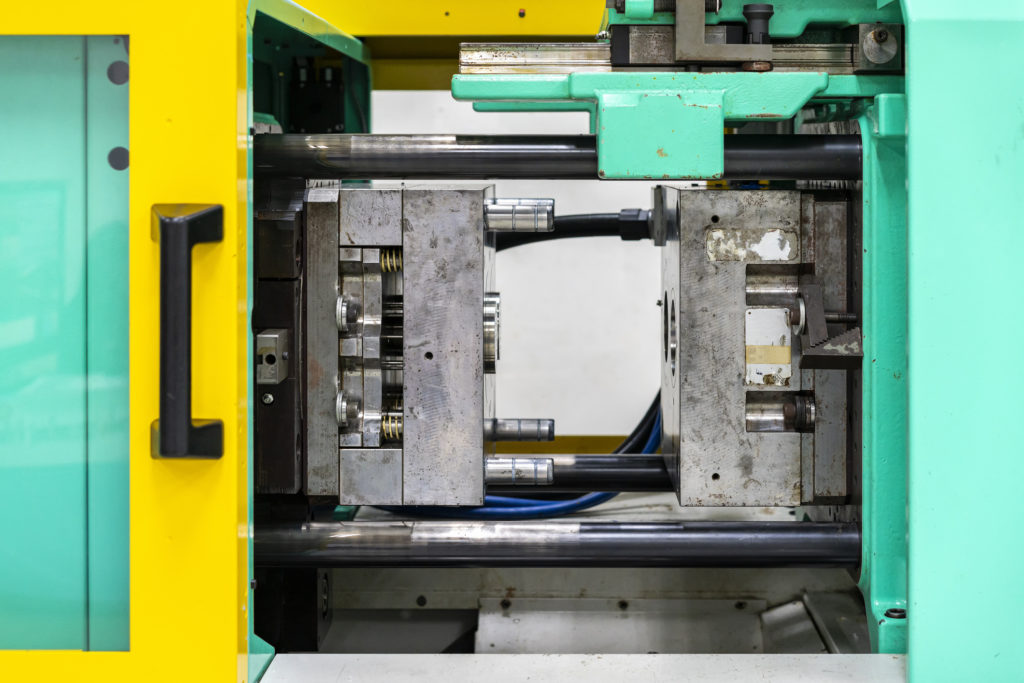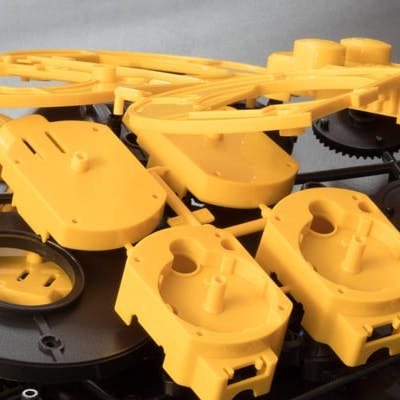Enhancing Product Growth with Advanced Plastic Injection Molding Solutions
Enhancing Product Growth with Advanced Plastic Injection Molding Solutions
Blog Article
Comprehending the Essentials of Plastic Injection Molding Processes
Plastic injection molding offers as a cornerstone of modern-day production, providing a systematic method to generating intricate elements with precision. Discovering these essential elements can expose just how even small changes can lead to considerable improvements in manufacturing end results, elevating inquiries concerning the possibility for innovation in this established process.
What Is Plastic Injection Molding?
Plastic injection molding is an extensively used manufacturing procedure that transforms thermosetting and polycarbonate materials right into specific and complicated shapes. This method is preferred for its capacity to create high volumes of the same parts with remarkable accuracy, making it a vital approach in various sectors, including auto, consumer goods, and clinical tools.
The process entails melting the selected plastic product and injecting it right into a mold and mildew under high pressure. The mold, made to the specs of the wanted part, allows the liquified plastic to materialize as it strengthens and cools. When the product has actually hardened, the mold and mildew is opened, and the ended up part is expelled.
Plastic injection molding uses numerous benefits, including reduced waste, consistency in production, and the ability to include complex layouts that might be testing with other producing techniques. In addition, it sustains a wide series of products, each supplying special residential or commercial properties that can be tailored for specific applications. As markets remain to introduce, plastic injection molding remains at the forefront, enabling the growth of innovative items that satisfy developing consumer demands.
The Injection Molding Process
The injection molding process is an advanced method that entails several essential stages to produce top quality plastic elements. At first, plastic pellets are fed into a warmed barrel where they are melted into a viscous liquid. This molten plastic is then injected under high stress into a precision-engineered mold and mildew, which forms the material into the wanted kind.
Once the mold is loaded, the plastic is enabled to cool down and strengthen, taking the form of the mold cavity. Air conditioning time is essential, as it affects the cycle time and the last properties of the molded part. After enough cooling, the mold opens, and the finished part is ejected utilizing ejector pins.
Products Utilized in Injection Molding
Numerous materials can be utilized in the shot molding procedure, each offering unique buildings that deal with certain applications. The most typically utilized materials include thermoplastics, thermosetting plastics, and elastomers.

Thermosetting plastics, like epoxy and phenolic resins, go through a chemical change during the treating process, resulting in a rigid, inflexible framework. These products are perfect for applications needing high heat resistance and architectural integrity, often used in vehicle components and electric insulators.
Elastomers, including silicone and rubber-based products, provide flexibility and durability. Their distinct homes make them ideal for applications that demand elasticity, such as gaskets and seals.
Furthermore, specialized products like bio-based plastics and compounds are gaining traction for their environmental advantages and improved efficiency attributes, expanding the scope of injection molding applications in numerous sectors. Understanding the get more residential or commercial properties of these materials is essential for selecting the ideal type for details jobs.
Benefits of Injection Molding
Injection molding attracts attention as an extremely effective manufacturing procedure that uses numerous advantages for creating intricate get rid of precision. One of one of the most considerable advantages is the ability to develop complex designs that would be difficult or challenging to accomplish with various other methods (Plastic Injection Molding). The procedure permits comprehensive functions and tight resistances, making sure high-quality components
In addition, shot molding is understood for its quick production capabilities, making it an ideal selection for high-volume manufacturing. Once the mold is created, parts can be generated rapidly, reducing preparations and view publisher site boosting general efficiency. This effectiveness not just reduces production prices yet also offers an one-upmanship out there.
The versatility of materials made use of in shot molding further improves its charm. A vast array of thermoplastics and thermosetting polymers can be employed, allowing suppliers to pick materials that best meet their certain needs, including warm, strength, and adaptability resistance.
Additionally, the procedure lessens waste, as excess product can commonly be reused and recycled. This sustainability facet adds to a decreased ecological effect, making injection molding a liable manufacturing option. Overall, the advantages of injection molding make it a preferred method for numerous sectors.
Factors Influencing Item Quality
While numerous factors can influence product quality see here now in injection molding, understanding these aspects is important for achieving optimum outcomes. Key facets consist of material choice, processing criteria, and mold and mildew style.
Product selection plays a crucial role, as various polymers show distinct residential or commercial properties that impact flowability, stamina, and thermal security. Poor product option can bring about problems such as bending or incomplete filling.
Handling criteria, consisting of temperature level, cycle, and stress time, must be diligently controlled. Variants in these settings can result in inconsistencies partly dimensions and surface area coating. Exceedingly high temperature levels might trigger degradation of the polymer, while poor pressure can result in short shots.
Mold and mildew design is just as important, as it establishes the circulation of the molten plastic and the cooling procedure. Improperly made mold and mildews might bring about irregular air conditioning rates, causing dimensional errors and residual stresses.

Conclusion
Finally, plastic injection molding works as a vital manufacturing process that allows the effective production of top quality parts. Proficiency of the shot molding process, including the understanding of materials and the influence of different factors on product quality, is vital for accomplishing ideal results. The advantages of this method, such as cost-effectiveness and design versatility, more underscore its significance throughout several industries, solidifying its condition as a recommended option for high-volume production.
Plastic injection molding offers as a cornerstone of contemporary manufacturing, offering a methodical technique to creating complicated parts with precision.Plastic shot molding provides numerous benefits, including reduced waste, uniformity in manufacturing, and the capacity to integrate intricate layouts that may be challenging with various other manufacturing approaches (Plastic Injection Molding). As industries continue to introduce, plastic shot molding remains at the leading edge, making it possible for the growth of sophisticated products that satisfy progressing customer needs
The injection molding procedure is an advanced strategy that includes several crucial phases to produce top quality plastic elements.In verdict, plastic injection molding offers as a crucial production process that allows the effective production of top notch components.
Report this page